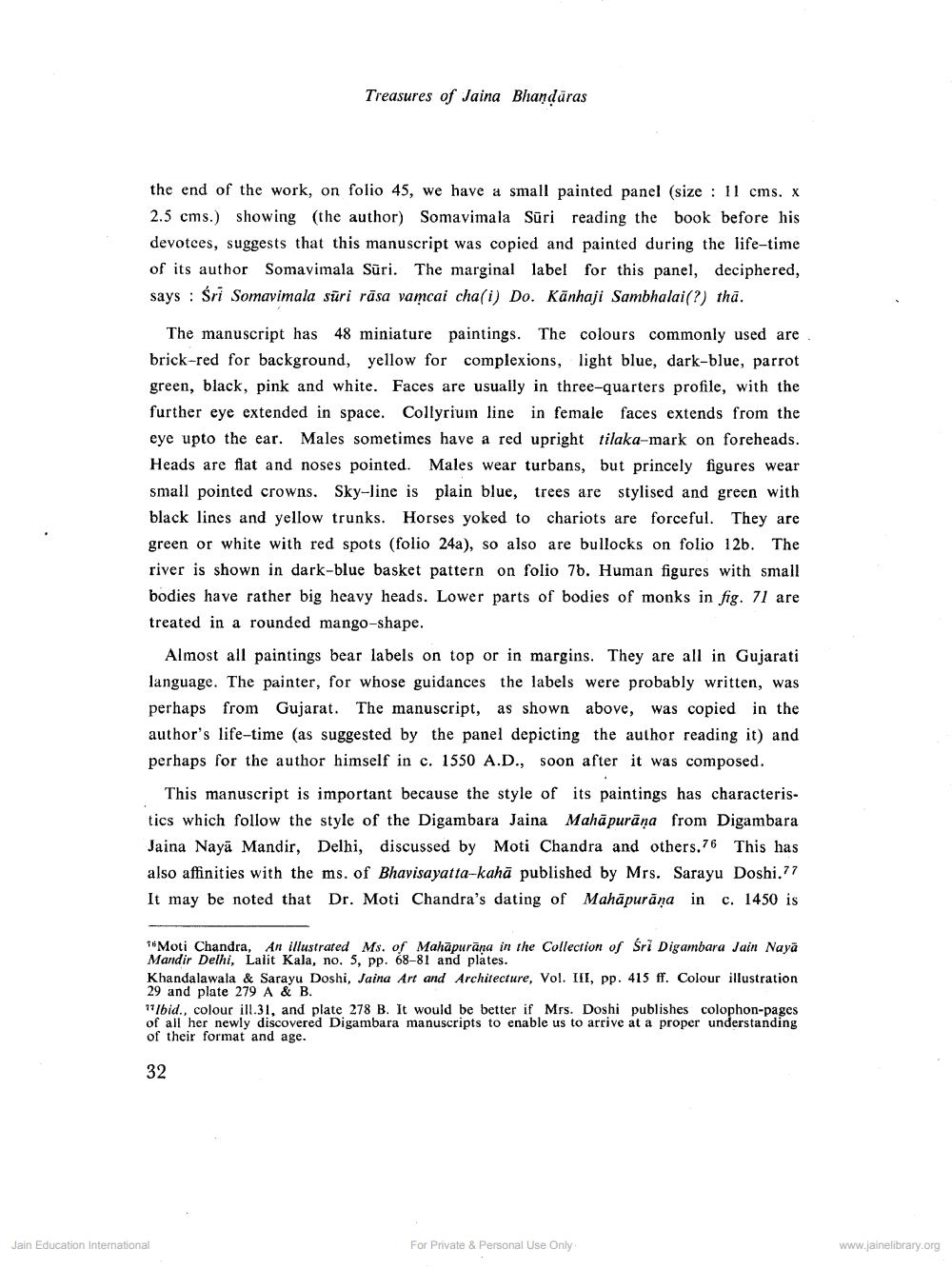________________
Treasures of Jaina Bhandaras
the end of the work, on folio 45, we have a small painted panel (size : 11 cms. x 2.5 cms.) showing the author) Somavimala Sūri reading the book before his devotees, suggests that this manuscript was copied and painted during the life-time of its author Somavimala Sūri. The marginal label for this panel, deciphered, says : Sri Somavimala sūri rāsa vamcai cha(i) Do. Kānhaji Sambhalai(?) tha.
The manuscript has 48 miniature paintings. The colours commonly used are brick-red for background, yellow for complexions, light blue, dark-blue, parrot green, black, pink and white. Faces are usually in three-quarters profile, with the further eye extended in space. Collyrium line in female faces extends from the eye upto the ear. Males sometimes have a red upright tilaka-mark on foreheads. Heads are flat and noses pointed. Males wear turbans, but princely figures wear small pointed crowns. Sky-line is plain blue, trees are stylised and green with black lines and yellow trunks. Horses yoked to chariots are forceful. They are green or white with red spots (folio 24a), so also are bullocks on folio 12b. The river is shown in dark-blue basket pattern on folio 7b. Human figures with small bodies have rather big heavy heads. Lower parts of bodies of monks in fig. 71 are treated in a rounded mango-shape.
Almost all paintings bear labels on top or in margins. They are all in Gujarati language. The painter, for whose guidances the labels were probably written, was perhaps from Gujarat. The manuscript, as shown above, was copied in the author's life-time (as suggested by the panel depicting the author reading it) and perhaps for the author himself in c. 1550 A.D., soon after it was composed.
This manuscript is important because the style of its paintings has characteristics which follow the style of the Digambara Jaina Mahāpurāna from Digambara Jaina Nayā Mandir, Delhi, discussed by Moti Chandra and others.76 This has also affinities with the ms. of Bhavisayatta-kahā published by Mrs. Sarayu Doshi.77 It may be noted that Dr. Moti Chandra's dating of Mahāpurāņa in c. 1450 is
**Moti Chandra, An illustrated Ms. of Mahāpurāna in the Collection of Sri Digambara Jain Naya Mandir Delhi, Lalit Kala, no. 5, pp. 68-81 and plates. Khandalawala & Sarayu Doshi, Jaina Art and Architecture, Vol. III, pp. 415 ff. Colour illustration 29 and plate 279 A & B. ** Ibid., colour ill.31, and plate 278 B. It would be better if Mrs. Doshi publishes colophon-pages of all her newly discovered Digambara manuscripts to enable us to arrive at a proper understanding of their format and age.
32
Jain Education International
For Private & Personal Use Only
www.jainelibrary.org




